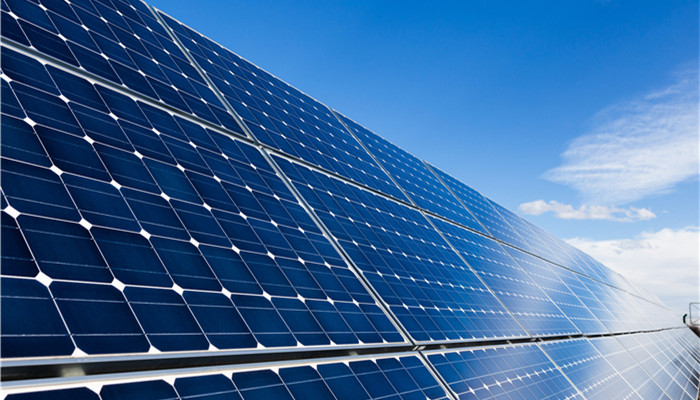
Photovoltaic film is an important component of photovoltaic modules and the industry has a broad consumer market
Photovoltaic film is an adhesive film material used on solar panels. It is mainly used to protect the panels from external forces, extend their service life, and effectively improve the photoelectric conversion rate of the panels. It is usually environmentally friendly and durable. sex, high transparency and other characteristics. Currently, there are four main photovoltaic films on the market: POE film, co-extruded EPE film, transparent EVA film, and white EVA film.
As my country’s economic development level continues to improve, social awareness of environmental protection continues to increase. In recent years, the country has introduced a number of policies to encourage and support the development of new energy industries. In March 2023, the General Office of the Ministry of Natural Resources and other three departments jointly issued the “Notice on Supporting the Development of the Photovoltaic Power Generation Industry and Standardizing Land Management”, proposing to encourage the use of unused land and existing construction land to develop the photovoltaic power generation industry, while strictly protecting the ecology. Under the premise, we encourage the construction of large-scale photovoltaic bases in deserts, Gobis, deserts and other areas. In the context of the rapid development of the photovoltaic industry, photovoltaic film, as an important component of photovoltaic modules, will further unleash market demand.
Against the background of increasing national policy support and increasing social investment, my country’s photovoltaic power generation installed capacity has maintained a rapid growth trend. According to data released by the National Energy Administration, my country’s newly installed photovoltaic capacity will be 87.41 million kilowatts in 2022, a year-on-year increase of 60.3%. Photovoltaic film has a broad consumer market.
According to the “China Photovoltaic Film Industry Market Monitoring and Future Development Prospects Research Report 2023-2027” released by the Industrial Research Center , in the context of the rapid development of the photovoltaic industry, my country’s photovoltaic film market demand maintains an upward trend. In 2019, my country’s photovoltaic film market demand was approximately 1 billion square meters. It is expected that market demand will exceed 2.5 billion square meters in 2023, with a compound annual growth rate of approximately 26% from 2019 to 2023. From the perspective of market structure, transparent EVA film accounts for more than 40% of the photovoltaic film market share and is the mainstream product in the market. POE film and co-extruded EPE film account for about 35% in total.
After a period of development in my country’s photovoltaic film industry, the number of production companies has continued to increase, production technology has continued to improve, and the industrial chain system has become increasingly perfect. At present, the domestic photovoltaic film industry is highly concentrated, with leading companies occupying most of the market share by virtue of their advantages in technology and scale. The main domestic photovoltaic film manufacturers include Hangzhou Foster Applied Materials Co., Ltd., Shanghai Haiyouwei New Materials Co., Ltd., Suzhou Saiwu Application Technology Co., Ltd., Jiangsu Swick New Materials Co., Ltd., etc.
Hangzhou Foster Applied Materials Co., Ltd. accounts for more than 50% of the photovoltaic film market share and is a leading company in the industry. The company’s leading products are solar cell adhesive films (EVA/POE adhesive films) and solar cell backsheets, which have an important influence in the field of photovoltaic packaging materials.
Industry analysts said that in the context of increasing national support for the photovoltaic industry and the growing installed capacity of photovoltaic power generation, photovoltaic The market demand for adhesive films will gradually be released, and the industry is booming. As competition in the photovoltaic film market continues to intensify, manufacturing companies need to continuously improve their independent innovation and research and development capabilities, optimize product quality and performance, and expand their competitive advantages.

 微信扫一扫打赏
微信扫一扫打赏

